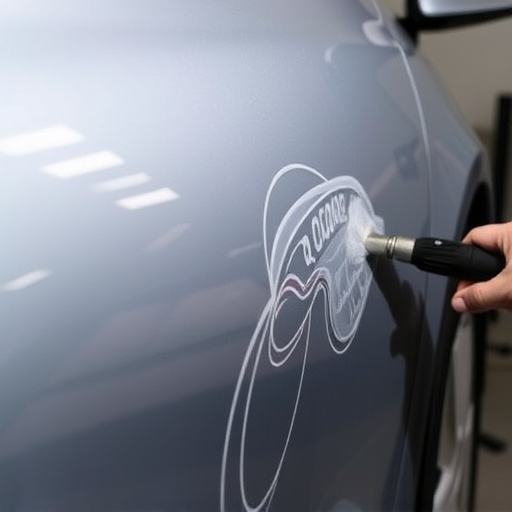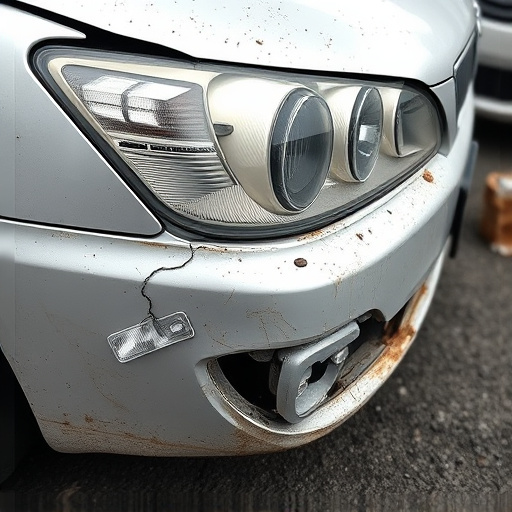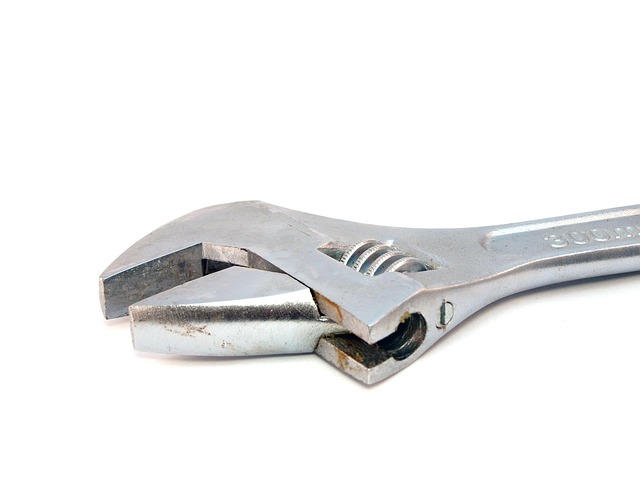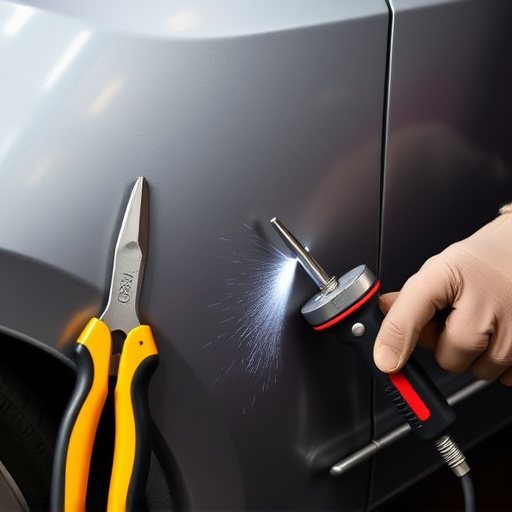Mercedes TPMS uses wheel sensors to monitor tire pressure, providing alerts via the vehicle's computer. Owners can perform a manual TPMS reset under certain conditions for convenience. Regular maintenance, including checks for damage and timely repairs, is vital for system effectiveness, safety, and fuel efficiency. Sensor malfunctions and incorrect readings are common issues resolved with a Mercedes tire pressure monitor reset or advanced diagnostics by specialized repair shops.
Preventing Future TPMS Issues in Mercedes Vehicles
Mercedes vehicles are renowned for their luxury and advanced technology, including sophisticated tire pressure monitoring systems (TPMS). Understanding these intricate systems is key to effective maintenance. This comprehensive guide delves into the inner workings of Mercedes TPMS, offering valuable insights on regular maintenance practices to avoid common issues like pressure monitor errors. From identifying potential problems to implementing troubleshooting strategies, learn how to ensure your Mercedes’ TPMS functions optimally, including effective tire pressure reset techniques.
- Understanding Mercedes TPMS Systems: A Comprehensive Overview
- Regular Maintenance: Keys to Avoiding Pressure Monitor Errors
- Common Issues & Effective Troubleshooting Strategies
Understanding Mercedes TPMS Systems: A Comprehensive Overview

Mercedes vehicles are renowned for their sophisticated engineering and advanced technology, and their tire pressure monitoring systems (TPMS) are no exception. Understanding how these systems work is crucial to preventing future issues. Mercedes TPMS uses a network of sensors embedded in each wheel to monitor tire pressure at all times. These sensors send data to the vehicle’s computer, which then alerts the driver if any tire pressure deviates from the recommended range.
The system also includes a feature that allows for a Mercedes tire pressure monitor reset. This reset can be performed manually by the vehicle’s owner under specific conditions, ensuring accurate readings after regular maintenance or when tires are rotated. It’s important to note that proper TPMS functionality goes beyond mere convenience; it plays a vital role in enhancing fuel efficiency and safety, particularly during critical driving conditions like severe weather or high-speed cornering. Regular checks and timely repairs for any issues, including potential damage from hail or car dents, can prevent not only costly repairs but also ensure the system’s longevity and effectiveness.
Regular Maintenance: Keys to Avoiding Pressure Monitor Errors

Regular maintenance is a key component to preventing future TPMS issues in Mercedes vehicles. Ensuring that your tires are properly inflated at all times is crucial; even slight variations in pressure can trigger error codes and require a Mercedes tire pressure monitor reset. Regular checks, ideally before every long journey, will help maintain optimal pressure levels, minimizing the risk of system malfunctions.
In addition to checking tire pressure, routine inspections for any signs of damage, wear, or misalignment are essential. Early detection of issues like punctures, tears, or uneven tread wear can prevent more serious problems that could compromise your vehicle’s safety and performance. Proper vehicle restoration techniques, including meticulous car dent removal and precise auto glass repair, contribute to maintaining the integrity of your Mercedes’ systems, including TPMS.
Common Issues & Effective Troubleshooting Strategies

Mercedes vehicles, renowned for their luxury and advanced technology, are equipped with Tire Pressure Monitoring Systems (TPMS) designed to ensure optimal safety and fuel efficiency. However, like any sophisticated system, TPMS is not immune to issues, leading to common problems such as sensor malfunctions, incorrect pressure readings, or even a complete TPMS failure. When these situations arise, it’s crucial to employ effective troubleshooting strategies.
One prevalent issue involves the sensors located on each tire, which can become desynchronized or damaged over time. A simple solution is to perform a Mercedes tire pressure monitor reset, often facilitated through the vehicle’s onboard computer. Additionally, regular maintenance checks and ensuring proper inflation pressures according to the vehicle’s specifications are preventive measures that can be taken at home. For more complex problems, consulting with a reputable collision repair shop or collision center specializing in TPMS repairs and auto painting services is recommended. These professionals have the tools and expertise to diagnose and rectify issues, extending the life of your TPMS system.
Preventing future TPMS issues in Mercedes vehicles involves a combination of understanding their advanced systems, regular maintenance, and prompt troubleshooting. By adhering to recommended service intervals and performing simple checks, owners can avoid costly repairs and ensure optimal safety. Remember, a well-maintained Mercedes tire pressure monitor system is key to a smooth and secure driving experience. Should any problems arise, a thorough understanding of common issues and effective troubleshooting strategies will help resolve them efficiently. Don’t forget, regular attention to your Mercedes TPMS system, including the occasional Mercedes tire pressure monitor reset, is crucial in maintaining both vehicle performance and passenger safety.













